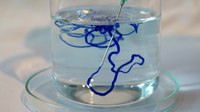
Modulation of Agronomic and Nutritional Response of Pleurotus eryngii strains by Utilizing Glycine betaine enriched Cotton waste.
Sign Up to like & getrecommendations! Published in 2019 at "Journal of the science of food and agriculture"
DOI: 10.1002/jsfa.9977
Abstract: BACKGROUND This study aimed to evaluate the possibility of cotton waste enrichment with glycine betaine (GB) for production of two strains (P9, P10) of king oyster (Pleurotus eryngii). Cotton waste was used as (100%) Control,… read more here.
Keywords: king oyster; cotton waste; glycine betaine; pleurotus eryngii ... See more keywords

Carbonaceous adsorbents derived from textile cotton waste for the removal of Alizarin S dye from aqueous effluent: kinetic and equilibrium studies
Sign Up to like & getrecommendations! Published in 2017 at "Environmental Science and Pollution Research"
DOI: 10.1007/s11356-017-8410-1
Abstract: Recycling cotton waste derived from the textile industry was used as a low-cost precursor for the elaboration of an activated carbon (AC) through carbonization and zinc chloride chemical activation. The AC morphological, textural, and surface… read more here.
Keywords: derived textile; cotton waste; removal alizarin; cotton ... See more keywords

Utilization of cotton waste for regenerated cellulose fibres: Influence of degree of polymerization on mechanical properties.
Sign Up to like & getrecommendations! Published in 2017 at "Carbohydrate polymers"
DOI: 10.1016/j.carbpol.2017.06.042
Abstract: Cotton accounts for 30% of total fibre production worldwide with over 50% of cotton being used for apparel. In the process from cotton bud to finished textile product many steps are required, and significant cotton… read more here.
Keywords: cotton waste; waste; cellulose fibres; mechanical properties ... See more keywords

Agro-industrial residues influence mineral elements accumulation and nutritional composition of king oyster mushroom (Pleurotus eryngii)
Sign Up to like & getrecommendations! Published in 2017 at "Scientia Horticulturae"
DOI: 10.1016/j.scienta.2017.07.010
Abstract: Abstract The utilization of low value agro-industrial residues for improving nutritional quality of mushrooms has become a key research priority in the recent past. The article reports the effects of various agro-industrial waste materials such… read more here.
Keywords: industrial residues; cotton waste; waste; agro industrial ... See more keywords